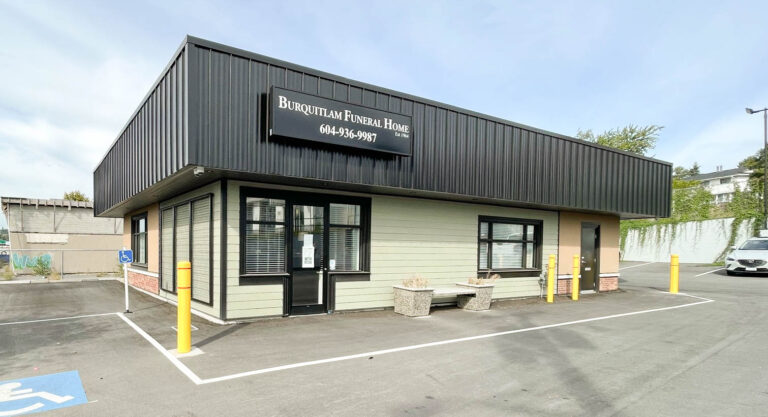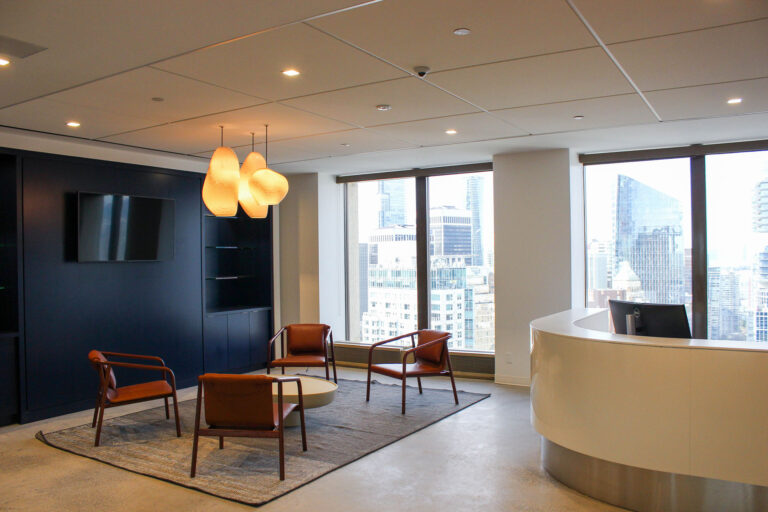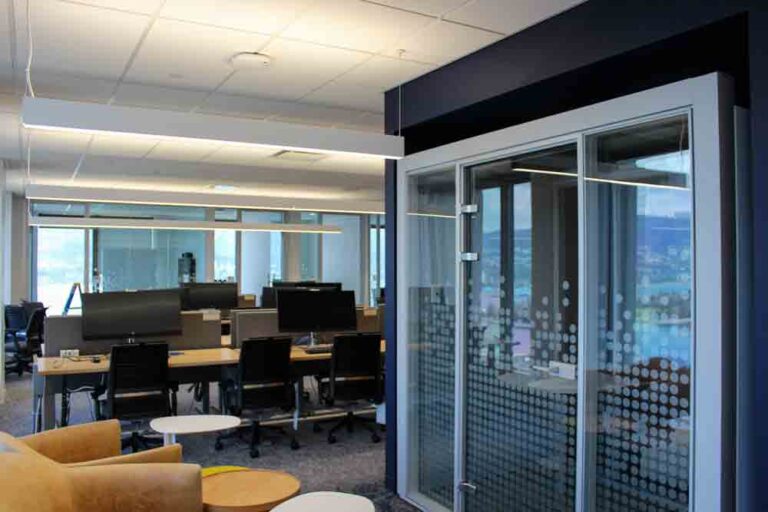Greater Vancouver is among the most vibrant and competitive business landscapes in Canada. For those on the quest for the perfect office in the region, it is important to know that it is more than just a matter of location and square footage. It’s ultimately about creating an environment that fosters productivity, collaboration, and innovation, and most spaces are going to need a bit of help to get there. While you are searching for your ideal space, before you even sign a lease, you should be thinking about and planning for tenant improvement (TI).
Why Early Tenant Improvement Planning Is Crucial
Tenant improvement involves customizing a commercial space to meet the unique needs and preferences of its occupants. From layout redesigns to installing technology and incorporating specific design elements, every aspect of tenant improvement directly influences the functionality, aesthetics, and overall success of a workspace. It’s not just about cosmetic upgrades; it’s about transforming a blank canvas into a tailored environment that reflects your brand identity, supports your business operations, and enhances the well-being of your employees.
Creating a Concept
Before looking at commercial office spaces, it’s essential for businesses to develop a test fit developmental design that outlines their ideal workspace requirements. This preliminary step allows them to gain clarity on their needs and preferences, ensuring informed decision-making throughout the leasing process. Factors to consider include the number of washrooms required to accommodate staff and visitors comfortably, the necessity of communal areas such as a staff room for breaks or meetings, and the layout preference, whether offices for privacy are preferred or an open-concept cubicle space to foster collaboration.
By creating a comprehensive plan upfront, businesses can articulate their vision to real estate agents and landlords, streamlining the search for a space that aligns with their specific requirements and optimizing the likelihood of finding the perfect commercial property to lease. Know that the design team can rework it to fit the final space and that you don’t have to shoe-horn the space into your design.
Mitigating Risks
The decisions you make during the TI planning process can have long-lasting implications for your business. A well-designed workspace can boost employee morale, attract top talent, and improve retention rates. On the flip-side, a poorly executed TI project may lead to inefficiencies, dissatisfaction among staff, and unnecessary expenses. Therefore, before committing to a lease agreement, it’s essential to delve into the intricacies of tenant improvement planning to ensure that your future workspace aligns with your strategic objectives and enhances your competitive edge in Vancouver’s dynamic marketplace.
Business leaders must employ strategic measures that mitigate any risks to ensure a smooth journey throughout the TI project and avoid cost or timeline overruns. To navigate these challenges effectively, BC businesses can adopt four key steps during the tenant improvement planning phase to keep projects on track.
5 Steps for Early Tenant Improvement Planning
Due Diligence Through Inspections
Just as it’s wise to enlist the expertise of a home inspector before finalizing a residential purchase, the same diligence applies to commercial properties. Collaborating with construction specialists to conduct a thorough physical assessment of the space before signing a lease agreement is crucial. This evaluation uncovers essential details like structural integrity, the condition of mechanical and electrical systems, potential hazardous materials, and the overall integrity of the building envelope. Overlooking these factors can lead to unforeseen expenses and jeopardize the feasibility of your investment.
We worked with a client in Coquitlam to create an office space from an old building that had a rich history and many previous tenants. It required extensive abatement (the removal and mitigation of hazardous materials), but we were able to help the client budget for this work from the start and created a great office space for them in a prime location.

This emphasizes the importance of comprehensive due diligence in tenant improvement endeavors. Engaging seasoned professionals, such as architects, engineers, contractors, and construction management firms, during the planning phase can help you plan for budgetary needs and avoid unexpected work and costs. Had our clients not involved us to inspect the property before signing a lease agreement they may not have realized the extent of abatement required and not adequately budgeted for it.
Understanding Zoning and City Requirements
Each municipality within Metro Vancouver has its unique zoning regulations and bylaws. Make sure the property you’re considering is compliant with local building codes before you sign a lease agreement. Property owners or past tenants may have carried out interior renovations without obtaining the necessary permits, potentially complicating your renovation process. We advise you to inquire with the landlord about the most recent set of city-approved drawings for the unit or delve into municipal archives to obtain copies of any previous alterations or plans on file for the property. You’ll need to determine if there are non-code compliant changes to the space, and while you may be able to see some obvious changes, you should have a building professional help with this. In the case of non-compliant additions the municipality may request corrections, which results in additional costs that you will want to factor into your TI planning. .
We recently assisted a client who leased a restaurant building, only to discover that the existing commercial kitchen lacked proper permits and adherence to building codes. This oversight resulted in a thorough investigation and the expense of bringing the property into compliance before they could obtain an operational license.
In another situation we navigated bureaucratic intricacies on behalf of a client in order to rezone a property to align with their needs. Through our diligent efforts, we facilitated the transition of our client into a practical and functional space, ensuring that the property met their business with efficiency. Our significant experience in rezoning helped to save them time and money, as well as the possible frustration around handling complexities they were unfamiliar with.
Timeline Considerations
Before signing a lease, clients embarking on tenant improvement planning must consider their timeline, particularly aligning the lease start date with contractor availability to ensure a smooth transition into the renovation phase. By understanding their availability and workload, you can negotiate with the landlord, presenting concrete data and expert opinions to support any requested adjustments to the lease start date. It’s crucial to get the property manager or landlord’s agreement with the proposed timeline to avoid conflicts. Working with a professional team prior to lease sign-off helps to secure a realistic project timeline. This proactive approach not only lays the foundation for a successful collaboration between all parties involved, it also mitigates risks around potential delays and unforeseen challenges, ensuring the seamless execution of the TI project.
On a non-bid project like tenant improvement, we at IDR have the advantage of engaging with preferred trades that consistently deliver high-quality results. Unlike the typical design-bid model, where a general contractor (GC) competes against multiple other GCs and is forced to secure the lowest subcontract bids to win the project, our approach ensures better outcomes. The design-bid model often leads to rushed projects with low-quality finishes, as cost-cutting measures take precedence over craftsmanship. By selecting trusted trades from the outset, we can guarantee superior workmanship and a smoother, more efficient construction process.
Note

Project Management
Managing multiple contractors is an important piece of tenant improvement. It requires strategic coordination and many opt for a professional to help streamline communication and oversight on a TI project.
While both general contractors and construction managers play pivotal roles in overseeing construction projects, they differ in their scope of responsibilities and overall approach. General contractors typically handle the day-to-day management of construction activities, including coordinating subcontractors, scheduling, and ensuring that the project stays within budget and meets quality standards. They often bid on projects based on pre-established plans and specifications and take full responsibility for the construction process from start to finish.
On the other hand, construction managers focus more on the overall planning, coordination, and supervision of a project. They may be involved in the early stages of a project, providing input on design, budgeting, and scheduling, and continue to oversee its execution, ensuring that all elements come together smoothly. While general contractors are directly responsible for the construction work, construction managers act as facilitators, orchestrating various aspects of the project to ensure its successful completion.
Vendor and Contractor Selection
Perhaps the most important part of early planning for tenant improvement is selecting who you work with. Choosing the right vendors and contractors is critical to ensuring the success of a TI project and it is important to find vendors early on who can support you in concept creation, inspections, and understanding permits before you sign an office lease. Construction management firms or GCs can help you navigate the negotiation process, providing insights that you may not have considered like building access, hours of construction, noise limitations, and what costs landlords should cover versus you, the tenant.
Engaging a reputable firm can offer numerous benefits to businesses undertaking tenant improvement. Firms, like IDR, typically have extensive experience and expertise in overseeing projects from inception to completion. They act as advocates for the business, managing the entire construction process on their behalf. One of the key advantages of working with a construction management firm is its network of trusted industry professionals, including architects, designers, engineers, subcontractors, and suppliers. These relationships develop over years of collaboration and mutual trust.
When selecting a construction management firm or GC, there are ways you can ensure they align with your project needs and expectations. Begin by inquiring about their experience and expertise in similar projects, including their track record of successfully managing projects of similar scale and complexity. Understanding their approach to project management, communication strategies, and how they handle unexpected challenges or changes can provide insights into their ability to effectively oversee your project. Additionally, ask about their team’s qualifications, including certifications, licenses, and relevant training, as well as their subcontractor selection process and relationships. Lastly, inquire about their references and past client experiences to gauge their reputation and reliability in delivering quality results. By asking these questions, you can make an informed decision and choose a partner that is best suited to meet your TI project objectives.

Planning for Commercial Tenant Improvement Projects in Vancouver with IDR
Successfully planning a tenant improvement project while you’re trying to find the perfect office space requires the right design and construction partners. Transparency and collaboration are the foundation of our work at IDR. Our goal is always to ensure a smooth process for our clients. Our approach to project management promotes efficiency and innovation, reducing the likelihood of construction cost overruns and surpassing projected timelines. To learn more about our expertise and dedication to excellence in commercial construction project oversight and execution, book a meeting with our experts today.

